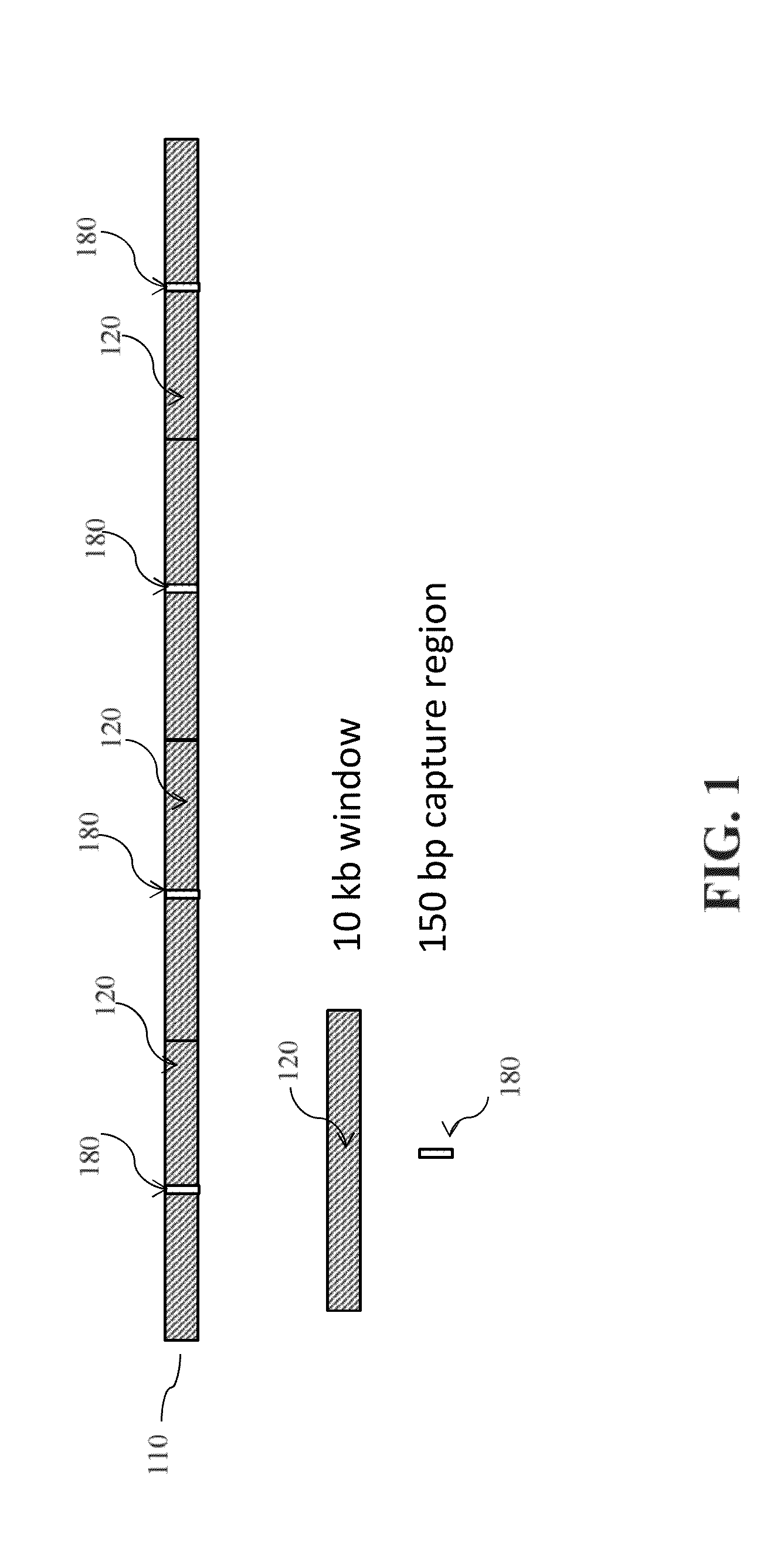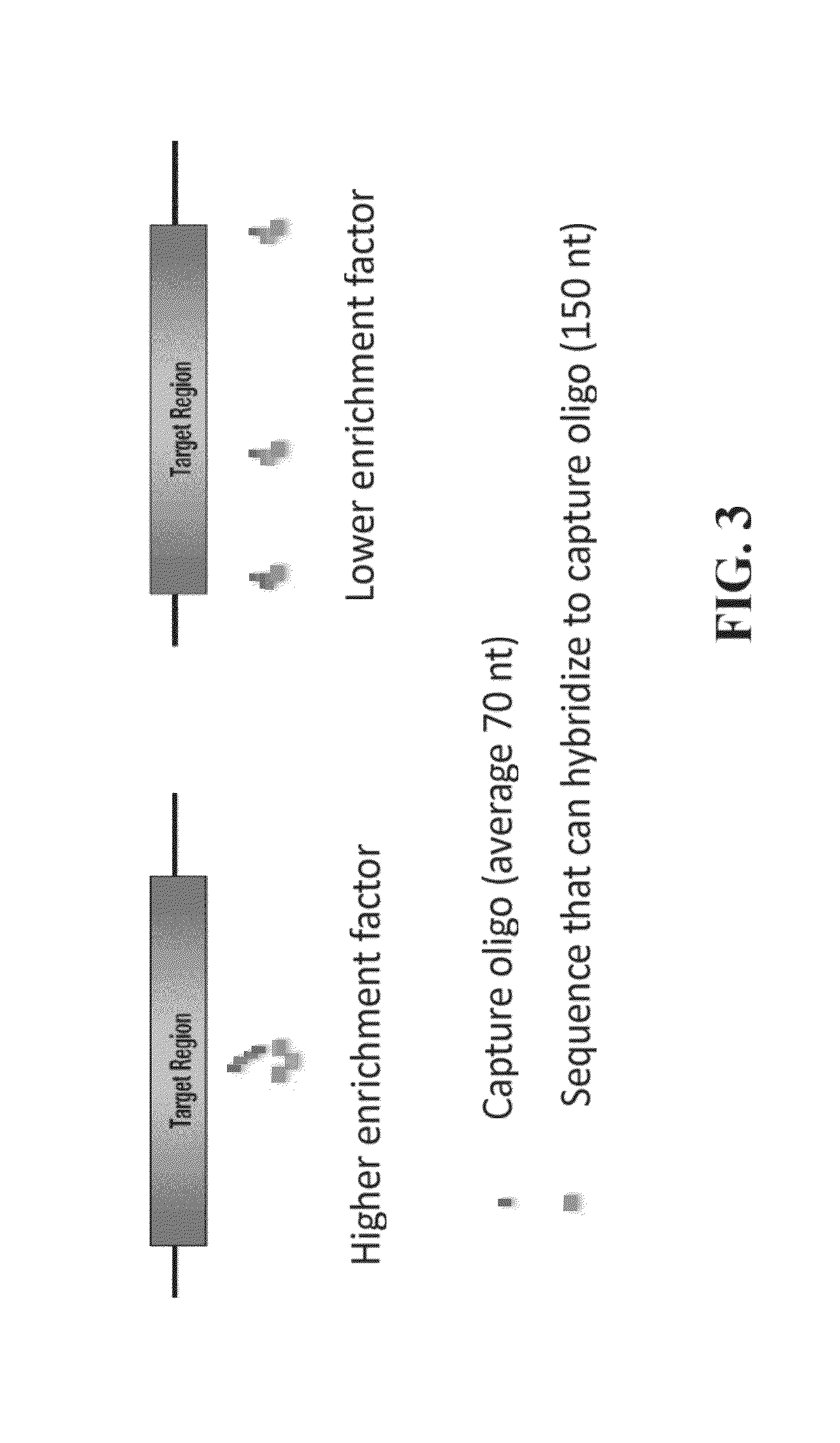Genome capture and sequencing to determine genome-wide copy number variation
a technology of copy number variation and genome, applied in the field of nucleic acid analysis and targeted sequencing, can solve the problems of too expensive to deeply sequence many samples, and the output generated by traditional next-generation sequencing far exceeds the analysis requirements for a single sampl
- Summary
- Abstract
- Description
- Claims
- Application Information
AI Technical Summary
Benefits of technology
Problems solved by technology
Method used
Image
Examples
example
Example 1
Create Custom-Order Capture Library
[0142]This example is an illustration of creating capture library via custom-design order. This example compares commercialized genome-wide CGH arrays with the capture library designed according to the embodiments of the current invention.
[0143]Many CNV arrays having a high density of probes in the target regions are commercially available. However, in many of these formats, probes are scattered genome-wide but NOT evenly-spaced. Differently, capture probes described in the present invention are evenly-spaced along a genome. To obtain a capture library comprising capture probes tiling capture regions evenly-spaced along genome for measuring replication timing, consecutive windows with a size of about 10 kb are selected. Sequences representing about 150 bp regions from about every 10 kb are further selected as capture regions. By such design, the capture library allows sequencing only 1 / 40 of the genome to obtain the same dynamic range of r...
example 2
Application of the Capture Library in Replication Timing Assay
[0146]The example illustrates the application of a capture library disclosed herein to enrich regions of interest for running next generation sequencing for obtaining replication timing information. In an exemplary embodiment, this technology may be similar to “Comparative Genomic Hybridization (CGH)” whereby a test genome and a reference genome are hybridized to capture probes tiling evenly-spaced capture regions along a genome.
[0147]In this example, a pool of enriched fragments containing interested capture regions are generated before running sequencing for replication timing. By using the capture library disclosed herein, a solution-based sequence capture enables the capture of an equal amount of sequences with a spacing of about every 6 kb to about 14 kb along the genome to achieve an even coverage of the genome without using microarray. For example, representative 150 bp regions from every 10 kb of a genome DNA are ...
example 3
A Kit Containing a Capture Library
[0153]FIG. 10 shows an example of a kit comprising a capture library contained within a container according to some embodiments of the present invention. A kit 1010 comprises a container 1020 and a capture library comprising a plurality of capture oligos 1030. In one example, capture oligo 1030 contained in the container 1020 may be biotinylated. Biotinylated capture oligos may be bound to capture material such as streptavidin-coated magnetic beads for pulling target sequences hybridized to the biotinylated capture oligos.
[0154]In some embodiments, a plurality of biotinylated capture oligos is separately packaged with streptavidin-coated beads or streptavidin-coated magnetic beads in a kit.
[0155]The above kit is only an example of different kits. The container for the kits is also not limited to the container illustrated herein. Any appropriated containers that can store oligos are suitable. The plurality of capture oligos in a kit may be in the for...
PUM
| Property | Measurement | Unit |
|---|---|---|
| Digital information | aaaaa | aaaaa |
| Digital information | aaaaa | aaaaa |
| Length | aaaaa | aaaaa |
Abstract
Description
Claims
Application Information
 Login to View More
Login to View More - R&D
- Intellectual Property
- Life Sciences
- Materials
- Tech Scout
- Unparalleled Data Quality
- Higher Quality Content
- 60% Fewer Hallucinations
Browse by: Latest US Patents, China's latest patents, Technical Efficacy Thesaurus, Application Domain, Technology Topic, Popular Technical Reports.
© 2025 PatSnap. All rights reserved.Legal|Privacy policy|Modern Slavery Act Transparency Statement|Sitemap|About US| Contact US: help@patsnap.com



